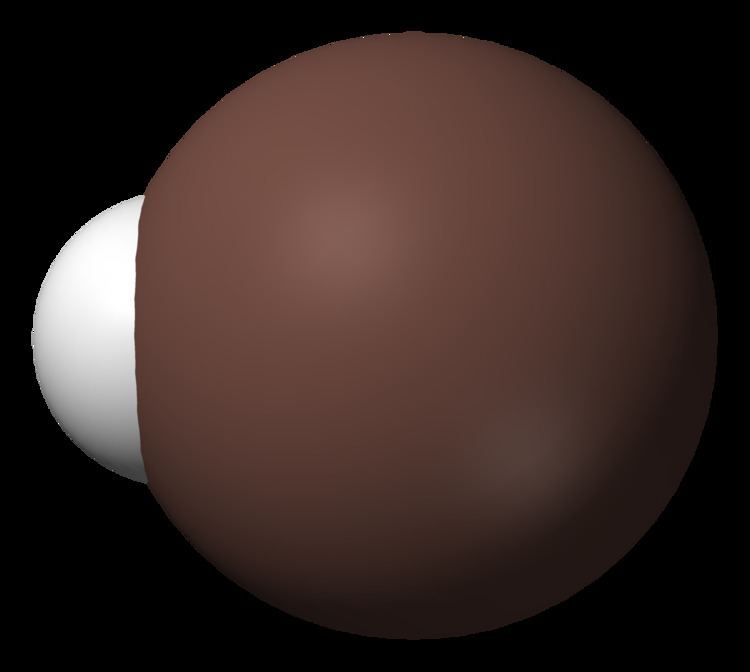Formula HAt | Boiling point -20 °C | |
 | ||
Hydrogen astatide, also known as astatine hydride, astatane, or astidohydrogen, is a chemical compound with the chemical formula HAt, consisting of an astatine atom covalently bonded to a hydrogen atom. It thus is a hydrogen halide.
This chemical compound can dissolve in water to form hydroastatic acid, which exhibits properties very similar to the other four binary acids, and is in fact the strongest among them. However, it is limited in use due to its ready decomposition into elemental hydrogen and astatine, as well as the short half-life of the various isotopes of astatine. Because the atoms have a nearly equal electronegativity, and as the At+ ion has been observed, dissociation could easily result in the hydrogen carrying the negative charge. Thus, a hydrogen astatide sample can undergo the following reaction:
2 HAt → H+ + At− + H− + At+ → H2 + At2This results in elemental hydrogen gas and astatine precipitate. Further, a trend for hydrogen halides, or HX, is that enthalpy of formation lowers as the period increases for the halide. Whereas hydroiodic acid solutions are stable, the hydronium-astatide solution is clearly less stable than the water-hydrogen-astatine system. Finally, radiolysis from astatine nuclei could sever the H-At bonds.
Additionally, astatine has no stable isotopes. The most stable is astatine-210, which has a half-life of approximately 8.1 hours, making its chemical compounds especially difficult to work with, as the astatine will quickly decay into other elements.
